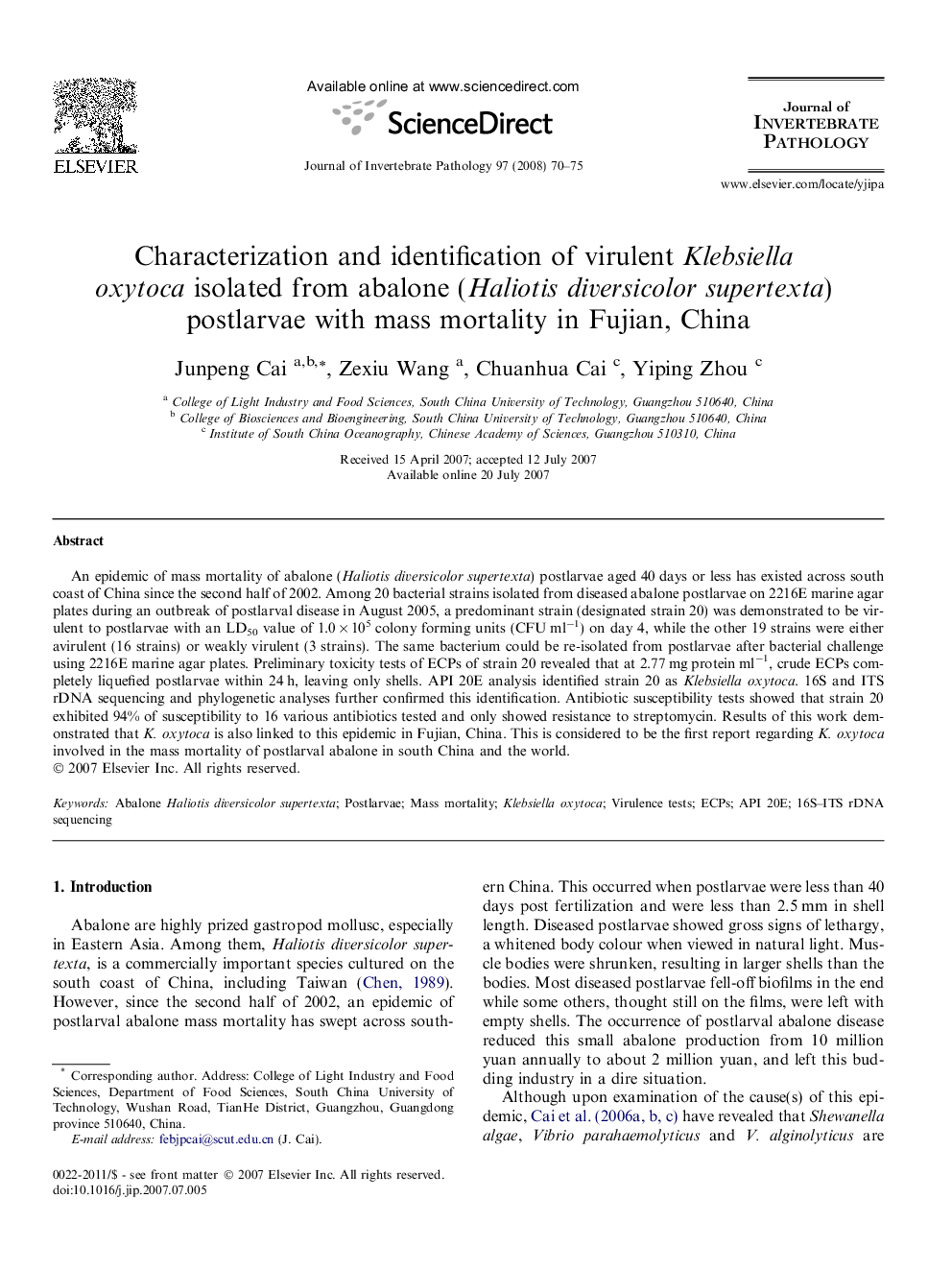| Article ID | Journal | Published Year | Pages | File Type |
|---|---|---|---|---|
| 4558533 | Journal of Invertebrate Pathology | 2008 | 6 Pages |
An epidemic of mass mortality of abalone (Haliotis diversicolor supertexta) postlarvae aged 40 days or less has existed across south coast of China since the second half of 2002. Among 20 bacterial strains isolated from diseased abalone postlarvae on 2216E marine agar plates during an outbreak of postlarval disease in August 2005, a predominant strain (designated strain 20) was demonstrated to be virulent to postlarvae with an LD50 value of 1.0 × 105 colony forming units (CFU ml−1) on day 4, while the other 19 strains were either avirulent (16 strains) or weakly virulent (3 strains). The same bacterium could be re-isolated from postlarvae after bacterial challenge using 2216E marine agar plates. Preliminary toxicity tests of ECPs of strain 20 revealed that at 2.77 mg protein ml−1, crude ECPs completely liquefied postlarvae within 24 h, leaving only shells. API 20E analysis identified strain 20 as Klebsiella oxytoca. 16S and ITS rDNA sequencing and phylogenetic analyses further confirmed this identification. Antibiotic susceptibility tests showed that strain 20 exhibited 94% of susceptibility to 16 various antibiotics tested and only showed resistance to streptomycin. Results of this work demonstrated that K. oxytoca is also linked to this epidemic in Fujian, China. This is considered to be the first report regarding K. oxytoca involved in the mass mortality of postlarval abalone in south China and the world.
